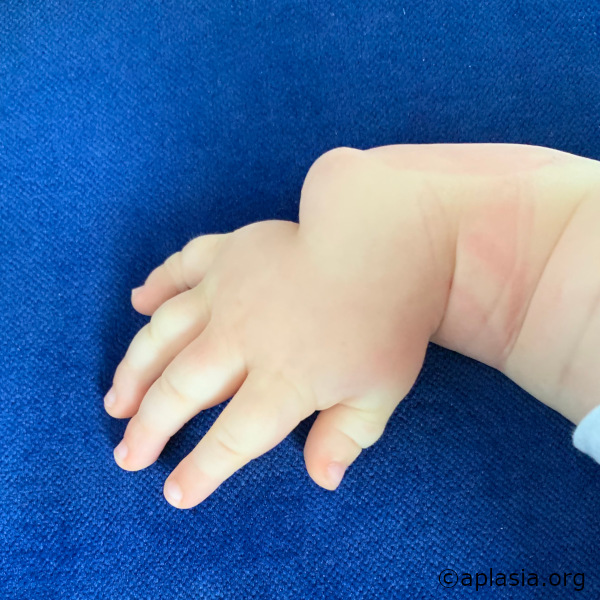radial aplasia
Absent Radius (Radial Aplasia)
Radial aplasia, also known as radial dysplasia or radial longitudinal deficiency or radial clubhand, is a medical condition in which the radius bone in the forearm is either absent or underdeveloped. This can result in a shortened or missing forearm, a deformity of the hand, and a limited range of motion in the affected arm. Radial aplasia is usually diagnosed prenatally or at birth.
Radial aplasia can occur as an isolated abnormality or as part of a larger syndrome, such as Holt-Oram syndrome, Fanconi anemia, or TAR syndrome. The cause of radial aplasia is poorly understood, but genetic factors often play a role.
Treatment for radial aplasia depends on the condition’s severity and any other associated abnormalities. In some cases, treatment may not be needed, while in others, treatment may involve surgery to improve the function and appearance of the affected arm. Occupational therapy and physical therapy is also recommended to help improve strength and mobility in the affected arm.
Bayne Classification of Radial Aplasia
The Bayne classification system categorizes the severity of radial aplasia based on the degree of radial deviation of the hand.
The four types of radial aplasia in the Bayne classifications:
- Type I: Mild radial deviation of the hand, with a functional thumb and wrist joint. Treatment may involve splinting or surgery to stabilize the wrist and improve hand function.
- Type II: The hand is severely deviated towards the thumb side, and the thumb is either absent or underdeveloped. The wrist is usually unstable, and there may be associated abnormalities in the forearm and hand bones. Treatment may involve surgery to stabilize the wrist and improve hand function.
- Type III: The hand is severely deviated, and the wrist is unstable. The forearm bones may be fused, and there may be associated abnormalities in the hand and fingers. Treatment may involve surgery to stabilize the wrist and improve hand function.
- Type IV: The thumb is entirely absent (except for TAR-syndrome where the thumb is almost always present), and the forearm bones are usually shortened and underdeveloped. This type of radial aplasia is typically more severe and may be associated with other abnormalities in the arm and shoulder. Treatment may involve surgery to improve function and appearance.
There are also other methods of classification of radial aplasia such as the Heikel classification method. However, we have seen our doctors using primarily the Bayne classification.



Relevant Sources and Publications
Hovius, S.E.R., Baas, M., van Nieuwenhoven, C.A. (2023). Radial Longitudinal Deficiency: Classification and Surgical Technique. In: Pajardi, G. (eds) Pediatric Hand Surgery. Springer, Cham. https://doi.org/10.1007/978-3-031-30984-7_15
Vilkki SK. Severity grading in radial dysplasia. Journal of Hand Surgery (European Volume). 2014;39(9):977-983. doi:10.1177/1753193413518709
